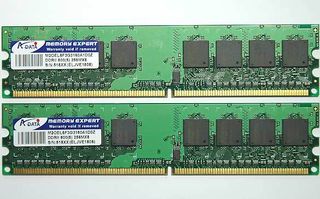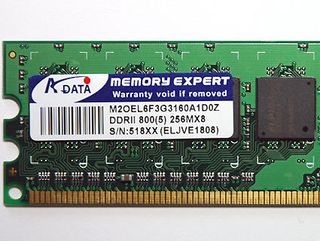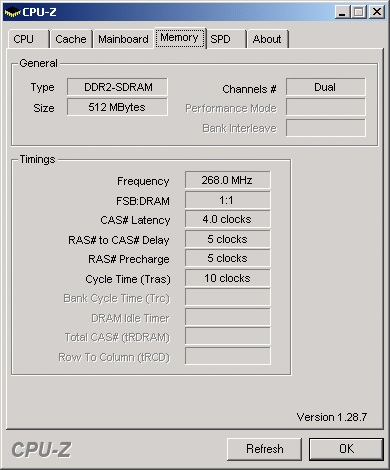Pushing Your DDR2 RAM To The Max
AData DDRII 800 (5)

Though AData is strongest in the US market, the company's origins lie in Taiwan. Its offerings are much like those from other memory vendors, and include many types of SDRAM and Flash products.
You can find all kinds of DDR2 memory modules on the company's Web site, all the way up to DDR2-1066, which AData seeks to support with maximum input voltages of 1.95V. However, the DIMMs they furnished to us couldn't hit this mark without raising voltage levels to 2.4V for stable operation. In contrast to numerous other competitors, AData products tend to crash at higher clock rates, which is why slower memory modules are only validated at CAS latency rates of 5 clock cycles. And while tighter timings are supposed to work, AData doesn't guarantee them.
We ran our benchmarks against the AData DIMMs, and optimized all the timings for each by hand, applying some serious "elbow grease" in the process. In its DDR2-1066 products, the 1 GB module was fastest, using stable working timings of CL4-5-5-10. DDR2-800 worked with CL4-4-4-8, DDR2-709 with CL4-3-3-8, and DDR2-533 with CL3-3-3-8.



Stay on the Cutting Edge
Join the experts who read Tom's Hardware for the inside track on enthusiast PC tech news — and have for over 25 years. We'll send breaking news and in-depth reviews of CPUs, GPUs, AI, maker hardware and more straight to your inbox.
Current page: AData DDRII 800 (5)
Prev Page Clock Or Timing Settings? Next Page Corsair XMS2, CM2X512A-5400ULMost Popular

